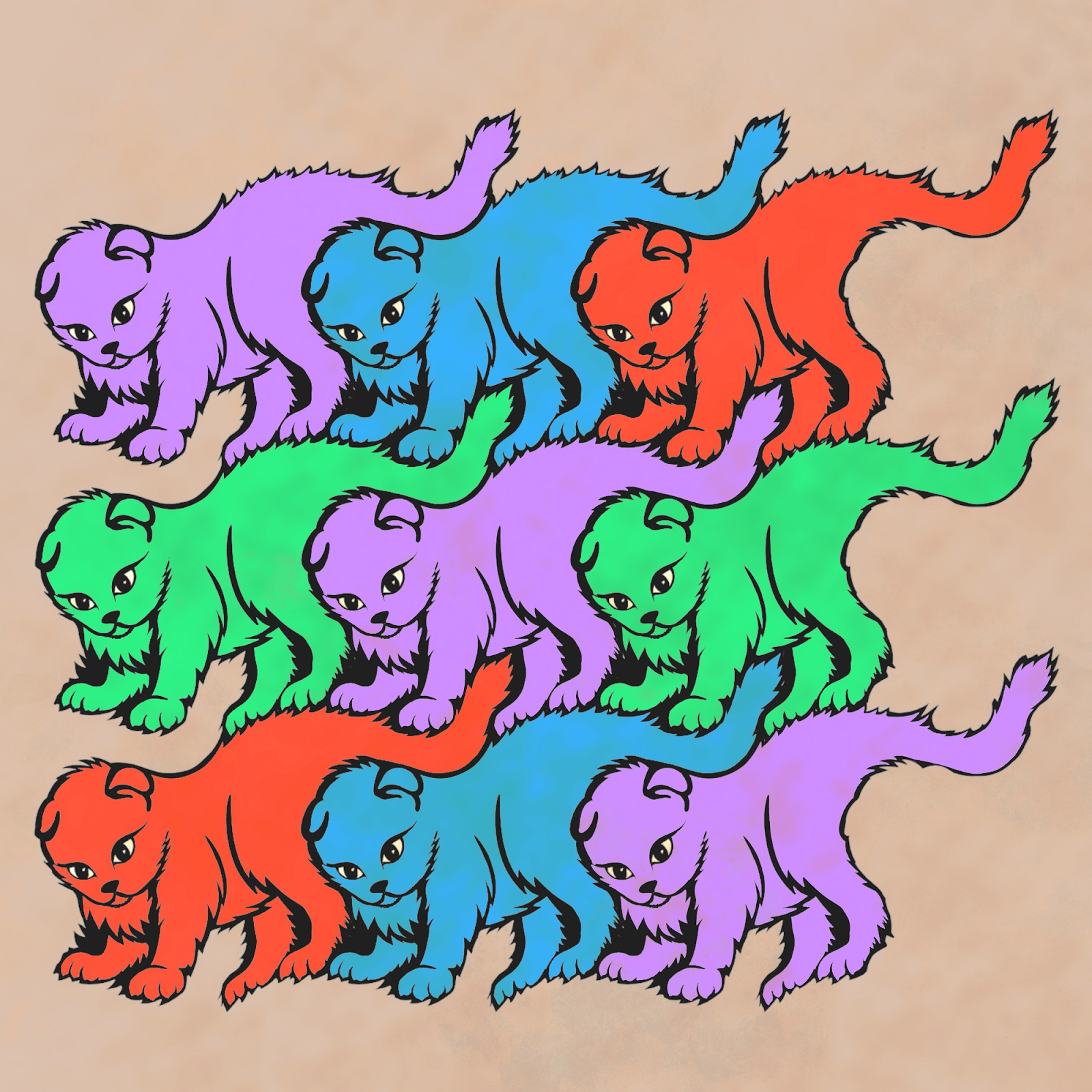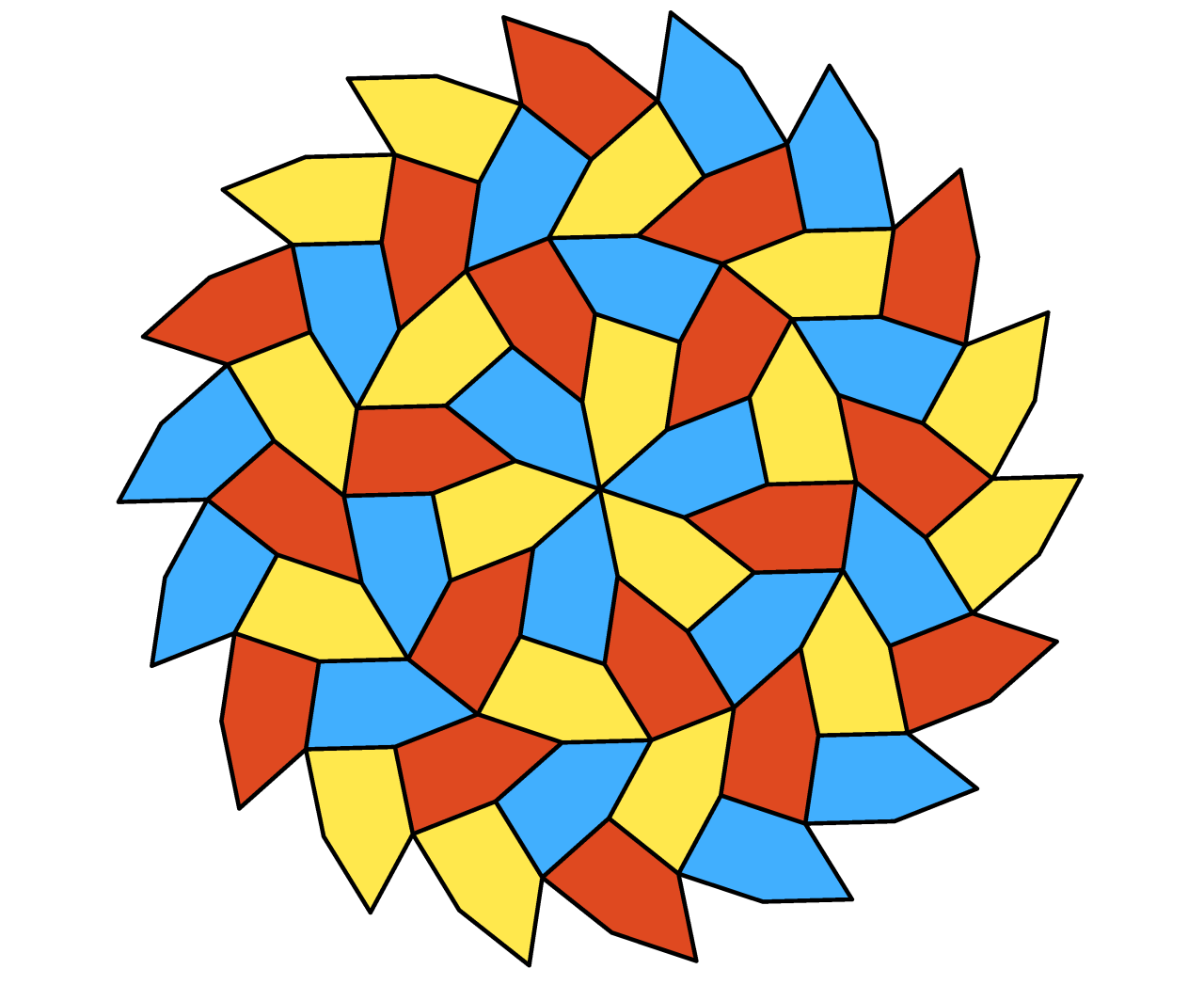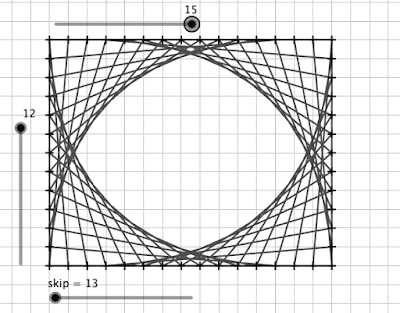I once again am getting to teach the math game design seminar (at some point they'll realize it's too fun to count for my workload) and I wanted to try and capture my design thinking on a promising new game.
Phil Shapiro shared on Bluesky his math pairs game. A randomized list of 1 to 100 where you find pairs that add up to 100.
For whatever reason, that made me wonder about a game finding differences. In elementary there's often a default to subtraction=take-away (Separate Result Unknown si parlez vous CGI) (I don't speak French) So a game that focused on the difference would be a good thing. I thought, what if you roll a die and need to find a pair that is that far apart?
For kids I like a number board that has a structure, so kids can use patterns to find what they want. (Nothing against Phil's game, where the Where's Waldo feeling is a lot of the fun.) My first try was a double spiral.
It was a lovely pattern, and I liked how it put small and large numbers together. As the game play evolved, it became clear that I needed a normal grid.
The other thing you can see here is pretty typical for me when I have a mechanic idea. Try out the mechanic and worry about the win condition as you go. The above image was my first try. I asked on Bluesky who won, and Phil responded probably yellow, since it seemed to have more territory. Biggest block of squares? Longest path? I stuck with that for a while. Eventually I realized the game is about differences, the win condition should be, too. What if the path with the biggest difference won?
Mechanically I really liked that. Then there's an advantage for the first player. And it raises questions: what's a path? I thought it should be only edge to edge, but it became too easy to cut someone off. Having squares connect corner to corner gave some of that Blokus energy. I did wonder about the sum of two paths, but that's unnecessarily complicated.
I'm still trying different play rules. Should one of your new squares have to be adjacent to one of your old squares? Currently I'm saying no, because that makes more interaction possible as well as opening up more strategy with more choice.
The board was 9x9 originally because I wanted that double spiral, so it had to be odd x odd. I can see this being on a hundred board. Great representation, and I love to have kids spend time with it. I like that +/-9 are above each other, because 10s are often comfortable already, and it feels like 9s still makes for lots of interesting patterns. It does make a game around 20 turns - which is long for 2nd & 3rd grade. Although kids play Joe Schwartz's Hundred Board Game (definitely a Best of Math Games awardee; video explaining it) is more turns, but the turns are quicker.
Why I think this is worth developing is because as I play, I have to think! Looking for pairs, any in good strategic placement, what is possible... a lot to consider. Too much for middle elementary? I hate to underestimate the players. Towards the end of the game, there are surprisingly frequent times that you can't take the number you would first take. The number rolled makes a difference in play, as well as providing some variance that helps with surprise.
One thing that came up is what if there's a tie? Then the winner is the person with the biggest difference on their second path that doesn't overlap their first path. Maybe a second path that doesn't cross their first?
What should keep you playing after you have a maximal chain? I thought about a bonus for being the last player to play. But that feels fussy. How else can I make people care about finishing? Maybe they don't have to?
Current rules text:
Two teams. Roll a 10 sided die (0=10) or flip a Tiny Polka Dot card. High number goes first and gets 10. Team 2 rolls and takes 90 and then 90 minus their number.
On your turn, find two numbers whose difference is the number you rolled and color them in your color. After 10 and 90, teams can choose any pair of numbers with the difference they rolled.
Game ends when both teams have to pass because there is no pair with that difference. Both teams draw a path connecting the biggest difference that can find. Squares connect edge to edge or corner to corner. Winner is the team to have the biggest difference in their path. For example if team 1 makes a path from 10 to 71 (71-10=61) and team 2 makes a path from 24 to 90 (90-24=66) team 2 wins! If tied, the winner is the team with the longest 2nd path that doesn't overlap their first.
The 10 and 90 start is trying to remove that first turn advantage. It's also is a step towards understanding strategy, which can be nice to bake into the rules.
Definitely want to try with a d20 as well. Maybe as a 4th and 5th grade variation? On a 0 with Tiny Polka Dot cards, you could be allowed to pick a single number - which definitely could be useful. Another variation for high school + players could be the sum of two paths victory rule.
Current game board. If you try, I would love to hear what you think. I'll definitely play with my games seminar, and maybe with my elementary preservice teachers &/or 2nd and 3rd graders.
Two games with the most recent rules. 10/90 start is working well.
PS. I make some references here to the criteria I use for thinking about games. Definitely a part of my design thinking.
PPS. I also like the name, which is unusual for me, but am open to suggestions.
















































